World War 1 and the Development of the Wrist Watch
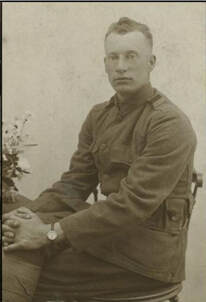 World War 1 changed society. One of the lesser known ways was the development of portable timepieces.
World War 1 changed society. One of the lesser known ways was the development of portable timepieces.At the beginning of the twentieth century, when most people were out and about, they got the time from church bells and factory whistles. Many had mantel or wall clocks in their homes. Alarm clocks had been patented in the middle of the nineteenth century and were being used increasingly. But outside the home, people went without a watch. There were two exceptions to this. Gentlemen and people whose jobs relied on timeliness, such as railroad conductors, carried pocket watches. Women who wanted to appear modern hung petite pendant watches about their necks, pinned tiny, brooch-like watches to their blouses, or bound dainty watches to their wrists. These small watches were not very accurate and were more decorative than precise and made small watches appear too feminine for most men to consider wearing.
 The Great War changed that perception. It was one of the first times that artillery and infantry synchronized their movements over long distances. Some of the biggest guns were 75 miles from the front they were shelling, and in order to not rain havoc on their own troops, they had to coordinate who was where to a greater precision than “at dawn.” The phrase “synchronize your watches” was developed. The concept of the creeping artillery barrage, where artillery laid down a curtain of fire that the infantry was supposed to follow close behind, made precise timekeeping imperative. It was clear that men at war needed watches. But what kind of watch was best? A man crouching in a trench or exchanging gunfire with the enemy, simply couldn’t pull a watch from his pocket, open the case, and check the time. He needed a quicker solution. Thus, the wristwatch overcame its effeminate image and become a practical necessity. By 1916, a quarter of all soldiers wore wristwatches. In 1917, the British War Department began issuing wristwatches to all combatants.
The Great War changed that perception. It was one of the first times that artillery and infantry synchronized their movements over long distances. Some of the biggest guns were 75 miles from the front they were shelling, and in order to not rain havoc on their own troops, they had to coordinate who was where to a greater precision than “at dawn.” The phrase “synchronize your watches” was developed. The concept of the creeping artillery barrage, where artillery laid down a curtain of fire that the infantry was supposed to follow close behind, made precise timekeeping imperative. It was clear that men at war needed watches. But what kind of watch was best? A man crouching in a trench or exchanging gunfire with the enemy, simply couldn’t pull a watch from his pocket, open the case, and check the time. He needed a quicker solution. Thus, the wristwatch overcame its effeminate image and become a practical necessity. By 1916, a quarter of all soldiers wore wristwatches. In 1917, the British War Department began issuing wristwatches to all combatants.
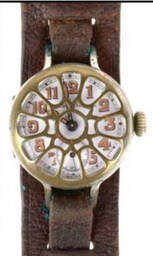 The first trench watches, or "wristlets" as they were known, looked like pocket watches mounted on a leather bands. They quickly changed to meet the demands of trench warfare.
The first trench watches, or "wristlets" as they were known, looked like pocket watches mounted on a leather bands. They quickly changed to meet the demands of trench warfare. Hinged covers protected crystals on pocket watches. Trench watches often had hinged cages that didn’t obscure the numerals. These soon became fixed.
The creation of luminous dials helped soldiers see the time in dim light.
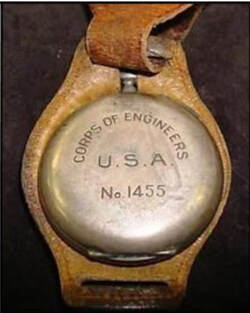 One thing that carried over from pocket watches was the engraving of names, titles, and places on the back cases of watches. Although dog tags had been implemented during WWI, a personalized engraving could serve as a redundancy system for identification. Different branches of service issued their men different brands and makes of watches. Other watches were gifts from family or employers. Many of the World War 1 watches that are still on the market bear interesting engravings on the back.
One thing that carried over from pocket watches was the engraving of names, titles, and places on the back cases of watches. Although dog tags had been implemented during WWI, a personalized engraving could serve as a redundancy system for identification. Different branches of service issued their men different brands and makes of watches. Other watches were gifts from family or employers. Many of the World War 1 watches that are still on the market bear interesting engravings on the back. 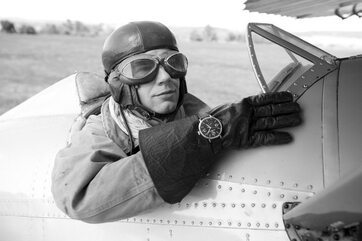 Roughly 1.8 million American soldiers served in France during WWI. Pictures of them in their handsome, trim uniforms, with their watches prominently displayed, helped the general public see wrist watches as symbols of masculinity and bravado, reflecting the spirit of a soldier. The fact that pilots, the most glamorous of all fighting men, started wearing using wristwatches gave wristwatches even more moxie with the American public. By 1930 the ratio of wrist watches to pocket watches was 50 to 1.
Roughly 1.8 million American soldiers served in France during WWI. Pictures of them in their handsome, trim uniforms, with their watches prominently displayed, helped the general public see wrist watches as symbols of masculinity and bravado, reflecting the spirit of a soldier. The fact that pilots, the most glamorous of all fighting men, started wearing using wristwatches gave wristwatches even more moxie with the American public. By 1930 the ratio of wrist watches to pocket watches was 50 to 1. 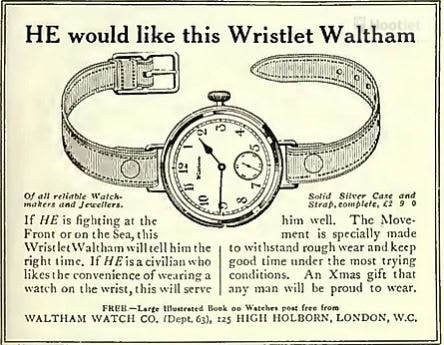 Was the rise of the wrist watch a blip in technological fashion? Smartwatches and cell phones have been taking market share from mechanical watches for a decade now. Could it be that the wrist watch will go the way of 8-track tapes? Or are wrist watches here to stay? Excuse the pun, but only time will tell.
Was the rise of the wrist watch a blip in technological fashion? Smartwatches and cell phones have been taking market share from mechanical watches for a decade now. Could it be that the wrist watch will go the way of 8-track tapes? Or are wrist watches here to stay? Excuse the pun, but only time will tell.
 Jennifer Bohnhoff's novel about World War I, A Blaze of Poppies, comes out October 22, 2021. There's still time to preorder the ebook on Amazon, or preorder a signed copy directly from the author.
Jennifer Bohnhoff's novel about World War I, A Blaze of Poppies, comes out October 22, 2021. There's still time to preorder the ebook on Amazon, or preorder a signed copy directly from the author.
Published on September 25, 2021 23:00
No comments have been added yet.



